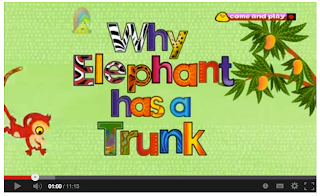Tuesday 22nd October I had a group review day with Chris and about 10 other students. Bringing in my draft project proposal as well as my ideas for my research report, we all looked at each others and then made notes for feedback and then individually went round talking about everyone's ideas.
Feedback & questions to consider:
(Studio Project)
- Which tale do you want to illustrate? And why?
- How many illustrations?
- Why African folk tales?
- How much time will you take choosing the folk tale?
- Interesting theme lots of room for development.
- Research into what other illustrators have done for folk tales and see if you can produce something original.
- Will imagery be in the form of shapes and patterns or more realistic imagery?
- What characteristics do you need to make things recognisable? Animals = horns, tusks, manes, trunk... something to think about when making imagery.
- Look at texture and warm colour, perhaps collage would be a good approach?
- Think about relationship between text and image, and how they're displayed together.
- Consider the use of colour in relation to African culture.
- Incorporate African culture and art within work.
- Look at colour and pattern used heavily in african art.
- Different colours and patterns for tribes... Make-up?...
- See how you can adapt a folk tale so it is appropriate for children.
- Maybe involve children in work?
- Think of other ways of presenting work?
- How will you get primary research for the subject?
- Museum in Oxford or Cambridge (the Fox Pit Museum) has a good selection of African memorabilia.
- V & A have examples and images of African folk tales.
- Black History Month at the moment in NUA Library. Something to look at?
- Black History Month events: forum, festival in St Georges park in Great Yarmouth.
(Research Report)
- Interesting points for sub-sections
- Huge subject, lots of info. Maybe focus on a specific idea? Apps etc...
- Discuss arguments for and against
- Interview digital/traditional artists, museum curators etc.
- Look at Varoom magazine, deviantart.com
- Has illustration been de-valued (monetary forms)?
- Can it like to studio project?
There were lots of great feedback about my project proposals to think about! This week I am going to choose a folk tale as some books I requested form UEA have arrived at the NUA library so I can take a look at them this week as well as some books I also got from the Millennium library. Regarding primary research, I am going to look at if there are anymore events going about Black History Month and I am also going to go to the Sainsbury Centre to get some observational drawing and photographs about African culture. I would travel up to London to visit some museums/galleries but I am getting increasingly aware of how short this project is! Also, I put into the proposal about how I would like my target audience to be children as I want to go into primary school teaching. Some people asked whether I could actually go into schools and see if I could work on the project involving children. This could be a good idea but I don't think it would be realistically possible because of the issues of going into the school and CRB checks etc. So for this project I want to stick with just my target audience being children. So I think that if I continue this subject into BA8 then I will go up to London in the next term. Plan is to firstly make a timetable to sort out what I am doing and then crack on!!
































